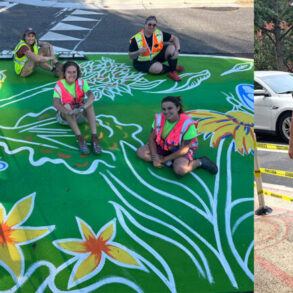
Editor’s note: This piece marks the start of a new monthly series in partnership with C2. Together, we’re creating a space for field notes, commentary, sharp provocations, and insights into the evolving practice of experiential marketing and business convening. In this opening piece, Anick Beaulieu, CEO of C2, unpacks what’s been lost in today’s business gatherings—and why getting people in the room isn’t enough anymore.
Let’s start with something uncomfortable: We’re still spending millions on bringing people together, but somehow, we forgot the basics. Like how to make someone feel welcome. Or how to design a space where real connection happens. Or—let’s be blunt—how not to serve cocktails in plastic cups.
We forgot why we gather—not to push product, but to make people feel something.
The problem with most business events today isn’t budget, attendance, or ambition. It’s care. Somewhere between the booth and the branded swag bag, we lost the plot. We stopped thinking like hosts and started acting like sales funnels. We engineered outcomes and forgot the humans. And it shows.
Just think of the last time you walked into a conference and immediately felt welcome. Seen. Cared for. Didn’t happen? You’re not alone.
The transaction trap
At business gatherings, the KPIs are clear: leads, signups, exposure. But what about delight? What about giving people something they’ll actually remember?
Business convening became beige because it was never designed with the guest in mind. It was built to push product, information, and agenda. That’s the trap. We design for the transaction—not the transformation.
And in a world where AI handles more and more of the transactional work, the few human moments we have left matter more than ever.
Hosting is a business strategy
If we want to move beyond beige, it starts with how we host.
Think about the care we put into having someone over for dinner. The cutlery, the fresh flowers, the candle in the bathroom, the playlist, the seating chart. You know your guest is shy, so you seat them beside someone warm. You serve something that makes them feel at home.
Why? Because you want them to have a good time. Because you care.
And when care is real, it shows—in ways that are measurable. Emotionally resonant experiences drive deeper brand recall, higher satisfaction scores, and more meaningful post-event engagement. As Harvard Business Review outlines in its framework on B2B emotional value, when people experience belonging, personalization, and a sense of being genuinely cared for, they engage more deeply, stay longer, and advocate more readily.
This post was originally published on this site be sure to check out more of their content







